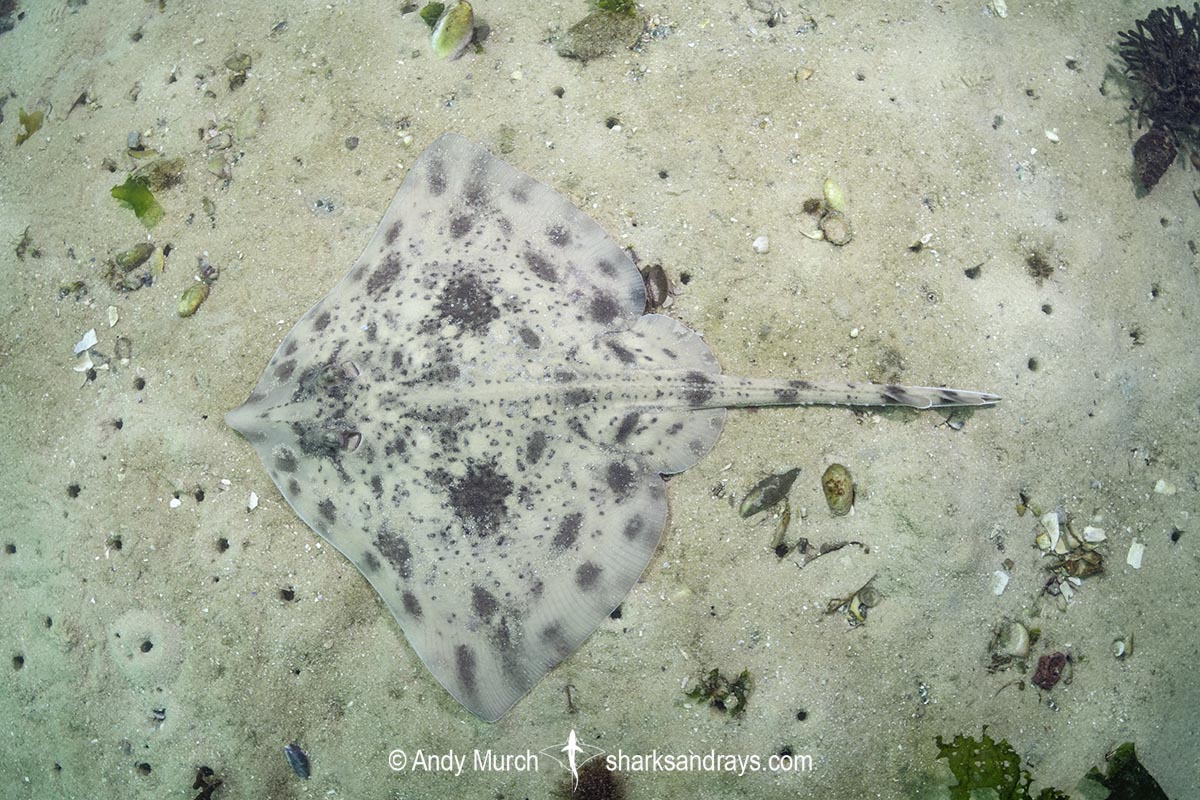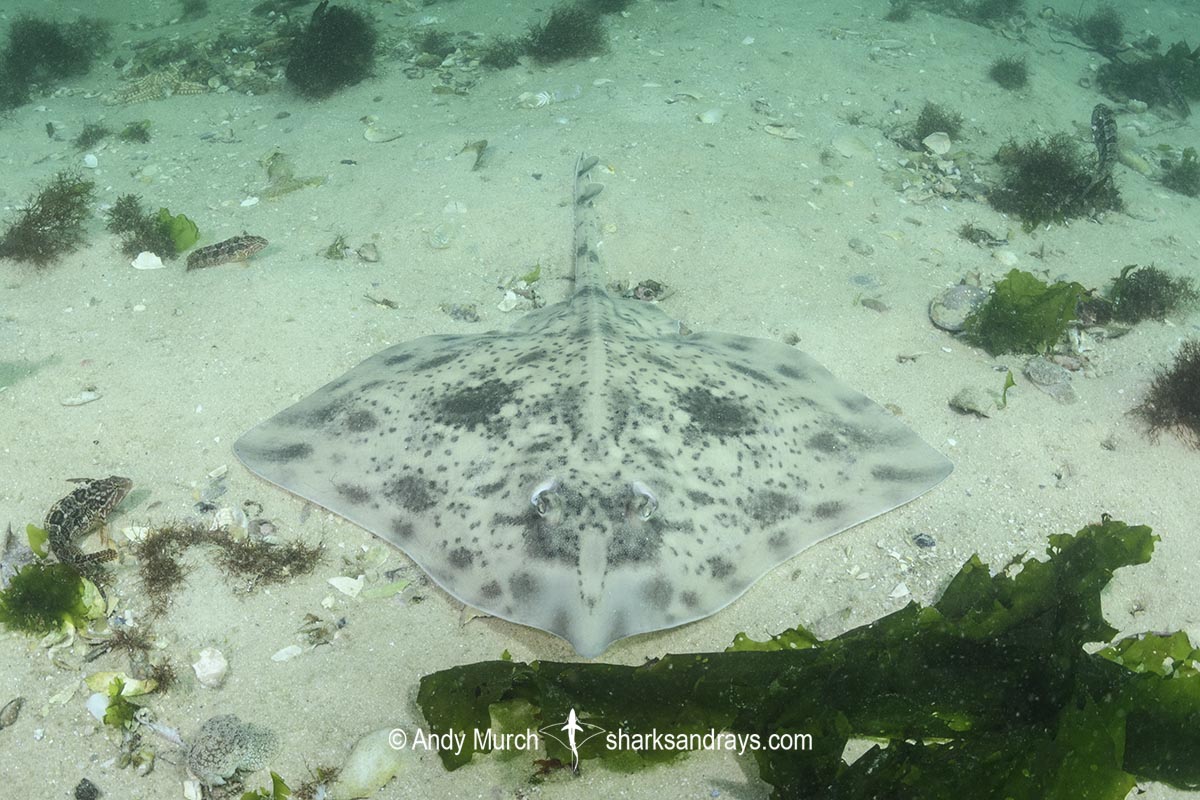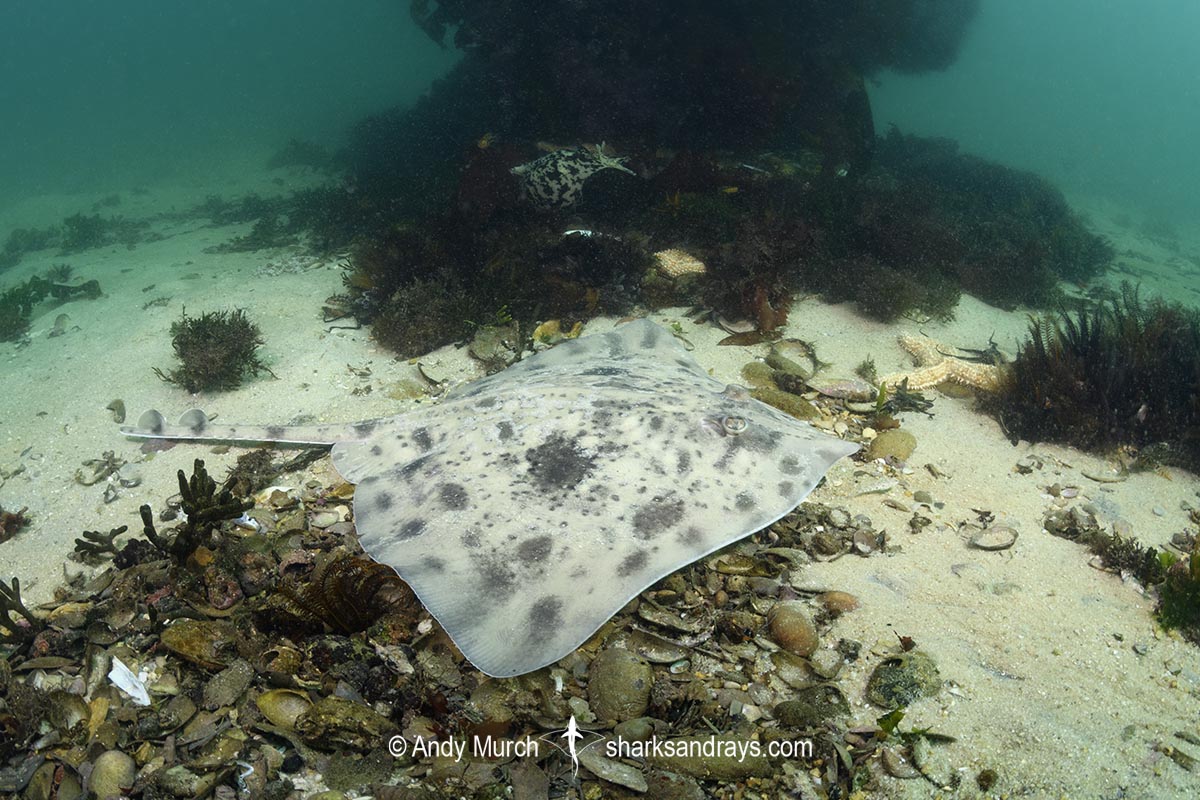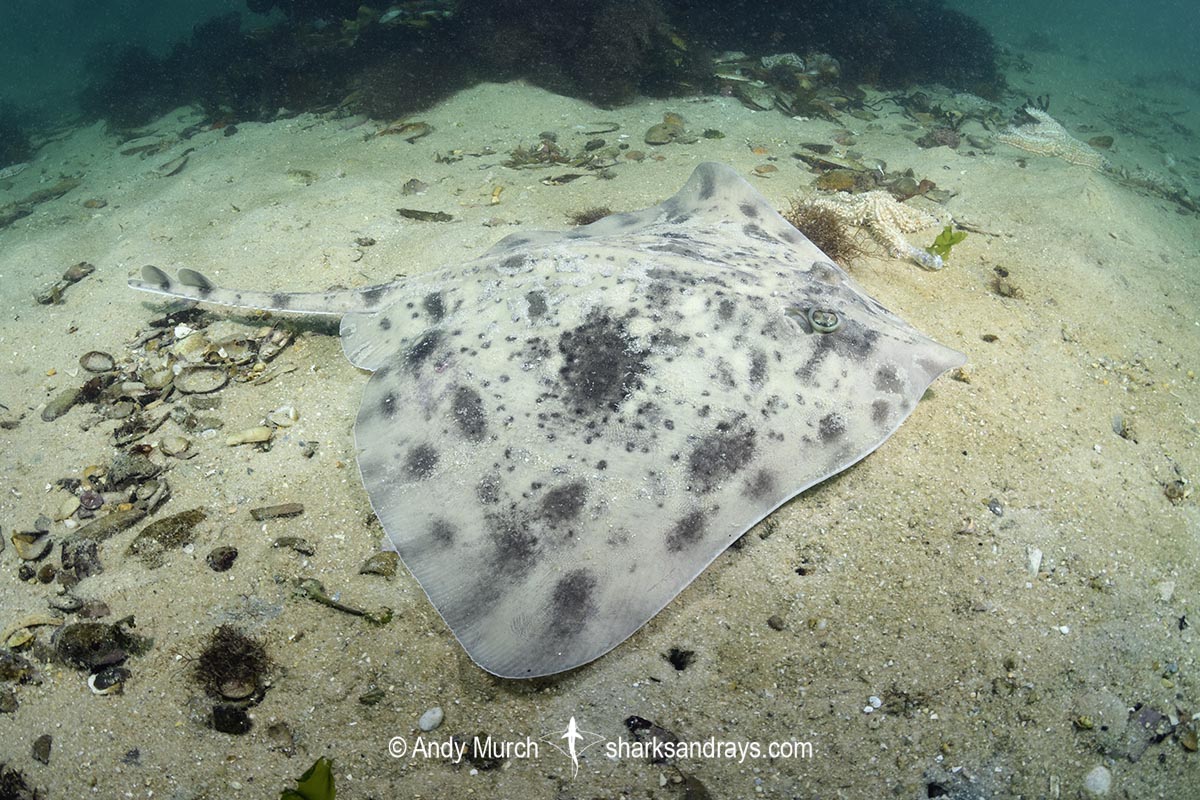Common names
Biscuit Skate, Spotted Skate.
Binomial
Raja straeleni.
Synonyms
None.
Identification
A fairly large skate with a broad, kite-shaped disc. Disc width 1.2-1.4 x disc length. Snout moderately long (2x inter-orbital space) outer angle obtuse, with a narrow, protruding tip. Eyes relatively large. Anterior margins of pectoral fins almost straight or weakly undulate. Pectoral apices narrowly rounded.
Disc covered in small prickly thorns in juveniles. Small thorns sometimes present on nape and shoulders. Males and females have a row of thorns along midline and tail. Females also have lateral thorn rows. Pelvic fins relatively large, weakly notched. Tail narrow and moderately long. Dorsal fins well separated, with rounded margins. 1-2 interdorsal thorns.
Colour
Dorsum cream, grey or brownish-grey, with a variable pattern generally consisting of numerous small (pupil-sized) dark spots or flecks, and much larger dusky blotches. Blotches may form a variegated row around margin of disc. A large pair of primitive, dark occeli are sometimes present on pectoral fins. Tail mostly pale with a few spots and 4-5 paired blotches forming rudimentary bands. Dorsal fins greyish with pale posterior margins. Ventrum white with a dusky margin, and a few dark blotches centrally and around cloaca.
Size
Maximum length 91cm. Egg case length ~8cm.

Conservation Status
NEAR THREATENED
The Biscuit Skate (Raja straeleni) is a bycatch component of interntional trawl and longline vessels operating in Northwest Africa and to a lesser degree further south.
Increases in Morocco and declines inMauritania of combined skates and rays have been documented, but no species specific data exists. In the Gulf of Guinea where the deep sea floor is not trawlable, the biscuit skate population is thought to be stable.
As deep-water fisheries continue to expand in response to declining fish stocks, population assessments of this and other batoid species is urgently needed.
In South Africa, no major population declines has been reported in the last 21 years.

Habitat
Temperate and subtropical seas. Demersal sand, mud, gravel, and mixed substrates. Occurs inshore, and on the continental shelf and slope. From 1-690m.
Distribution
The biscuit skate is found from Mauritania in West Africa to South Africa. Possibly also present in Madagascar and Mauritius.
Reproduction
Oviparous. Poorly known.
Diet
Benthic invertebrates and fishes.
Behavior
Unknown.
Reaction to divers
Easy to approach. Remains motionless unless harassed. Easily followed with non-threatening movements.
Diving logistics
The biscuit skate is rarely encountered at the northern end of its range, but it is sometimes seen in shallow bays in South Africa. Multiple sightings have occurred in False Bay, specifically, off Long Beach in Simonstown. Conducting a search over the sand in 10m depth, may yield results, but sightings are far from common.
What’s new
View our full list of updates
Similar species
Thornback Skate Disc sometimes similarly patterned, but distinguishable by heavily variegated/banded tail.












